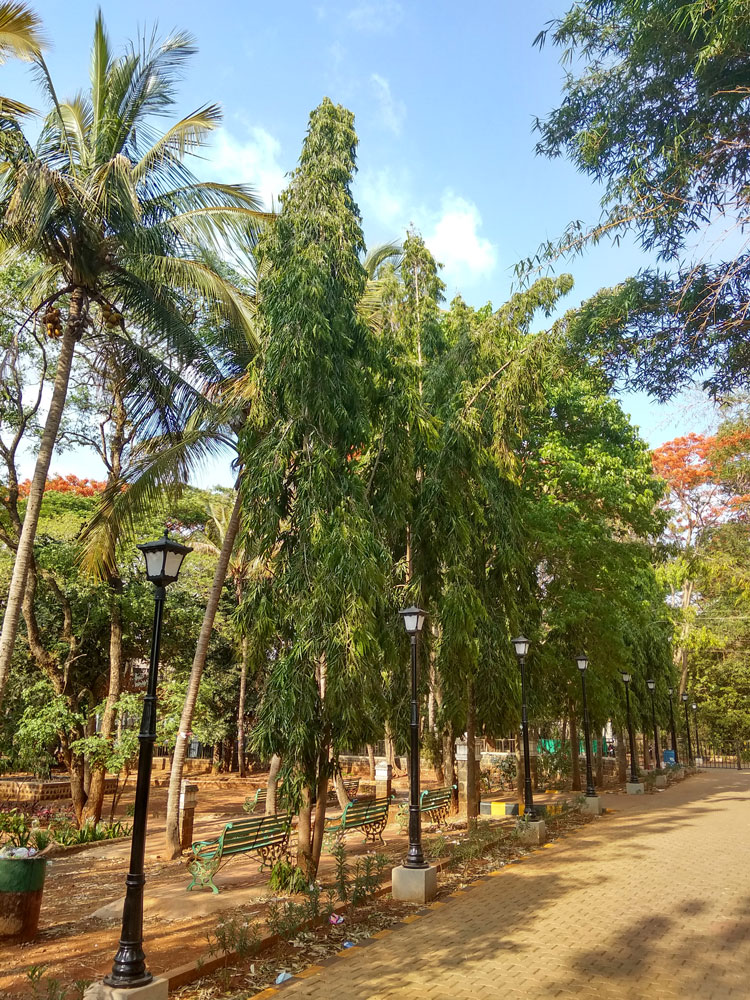Devdar - False Ashoka Tree

Polyalthia longifolia
Summary
Scientific Classification
Kingdom: Plantae
Division: Angiosperm
Class: Dicotyledonae
Order: Magnoliales
Family: Annonaceae
Genus: Polyalthia
Species: P.longifolia
Scientific Name: Polyalthia longifolia (Sonn.) Thwaites.
Common Names:
English: False ashoka, Mast tree.
Hindi: Ashok.
Kannada: Putranjiva, Ashokamara.
Marathi: Devdar.
Description:
- Habit and habitat: A tree. Evergreen forest, cultivated.
- Distribution: Found natively in India and Sri Lanka. It is introduced in gardens in many tropical countries around the world.
- Morphology:
Leaf: simple, alternate, narrow lanceolate or linear lanceolate, base slightly acute or cuneate, margin wavy or undulate, apex long acuminate, membranous, coriaceous, prominent on the midrib beneath, very slightly on the veins beneath, reticulate veinlets fine and close, petiole pubescent, gland-dotted.
Inflorescence: A fascicle or shortly peduncled umbel.
Flower: Pedicellate, bracteates, pedicels slender with a small deciduous bract about the middle. Flowers yellowish-green. Sepals 3, triangular, pubescent, tips reflexed. Petals 6, valvate, subequal, linear, tapering to a point.
Androecium: Stamens many cuneate, connective truncately dilated beyond the cells.
Gynoecium: Ovaries many, style oblong, ovules 1-2 basal and erect.
Fruit: An etaerio of berries. Berries stalked ovoid. Seeds large smooth and shining. Endosperm ruminate.
Flowering and Fruiting Time: April – June.
Seed: anatropous ovules develop into seedsseeds of P. longifolia deviate by the fact that the rumination plates, rather than deriving from the inner integument (the tegmen of the seed), are formed of tissue of the outer integument (seed testa), while the thin, 2-layered inner integument eventually degenerates. - Propagation: Polyalthia longifolia can be grown easily from seed or cuttings. It is a fast growing tree and requires good exposure to sunlight and moderate watering.
- Importance:
Planted as an evergreen avenue tree. Leaves used for decorative purpose toran on auspicious occasions. Straight long stem used for ship-mast. Used in manufacturing small articles such as pencils, boxes, matchsticks, etc. The oil of the seed has been confirmed to possess anti-oxidant, anti-lipooxygenase and antimicrobial (against various clinical isolates) activities among others. - Location: Avenue, Main Enterance Garden, Parking area.
 Trees of GSS Project supported by Makerspace Belgaum Website concept and designe by
Trees of GSS Project supported by Makerspace Belgaum Website concept and designe by